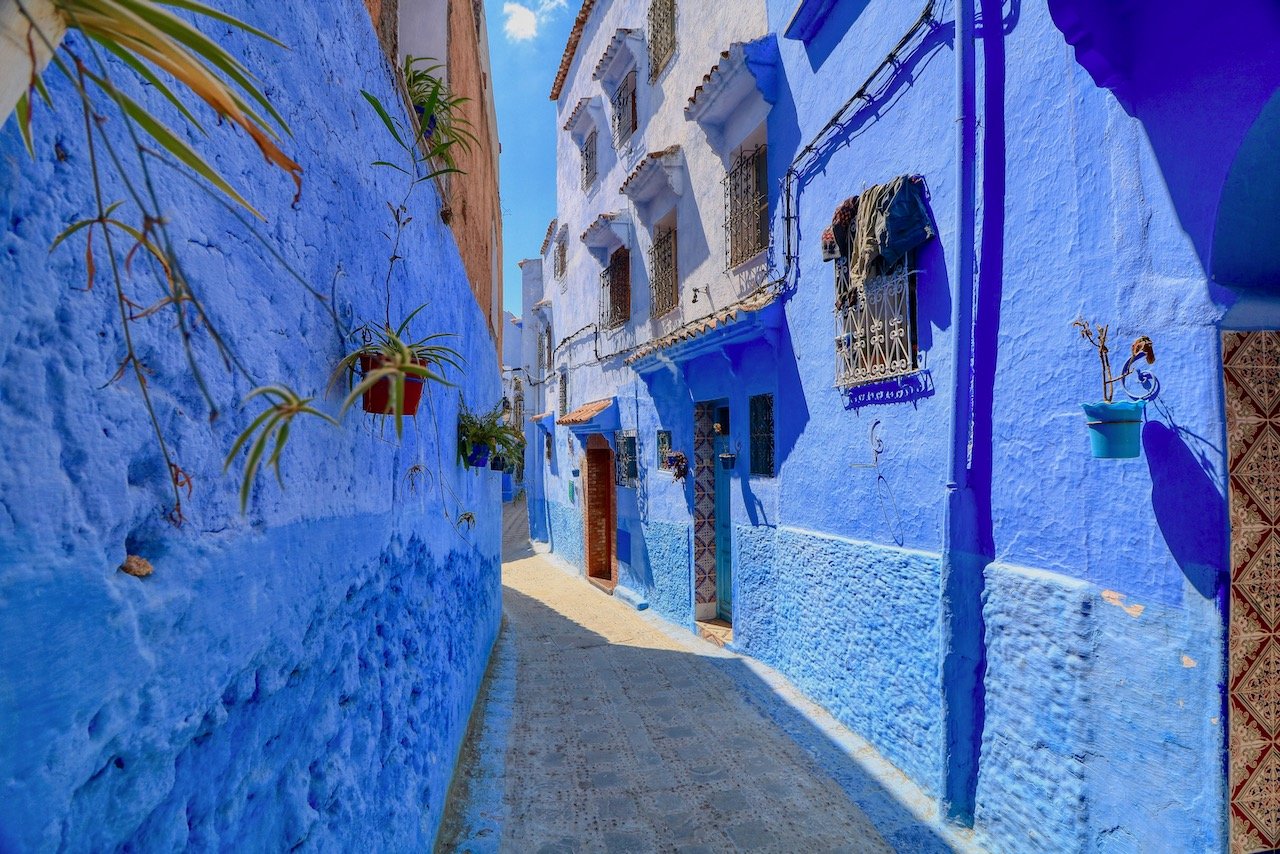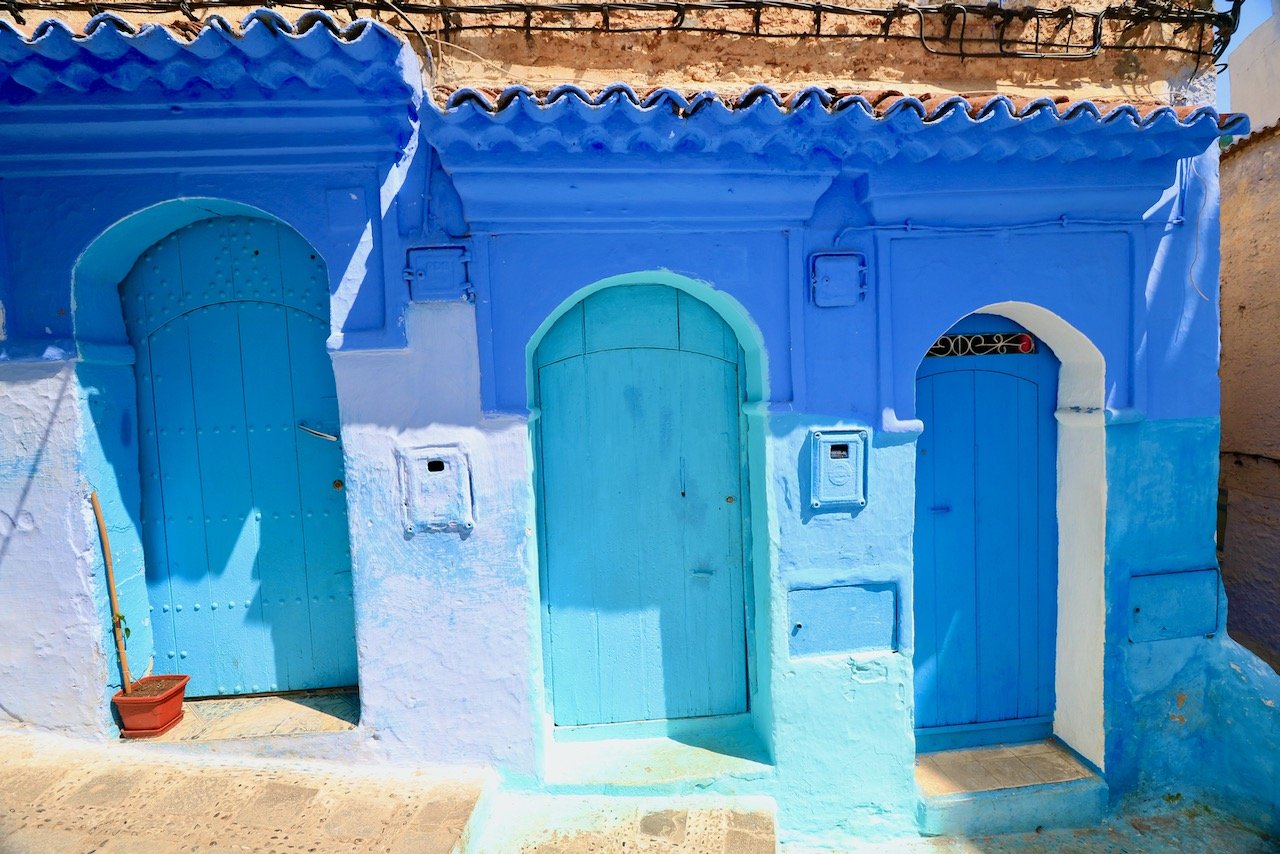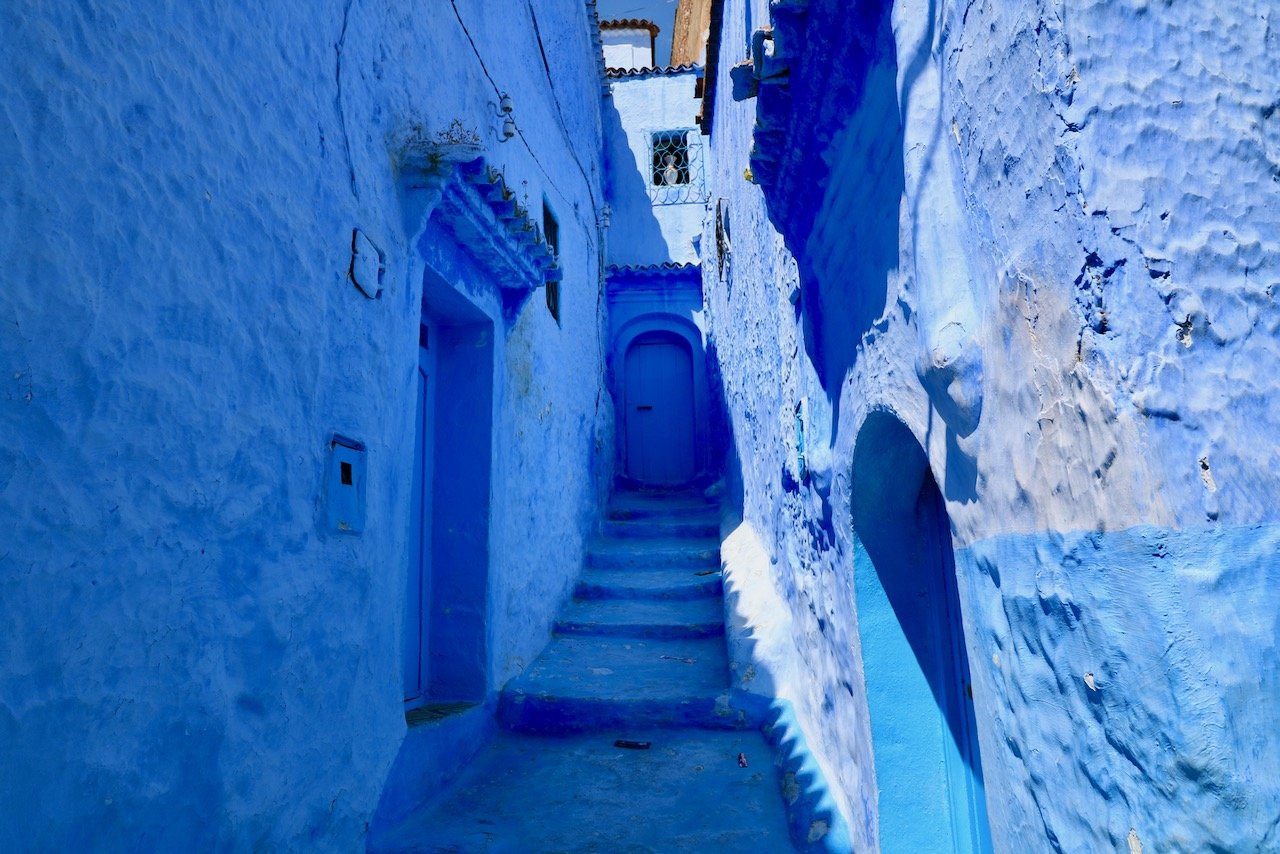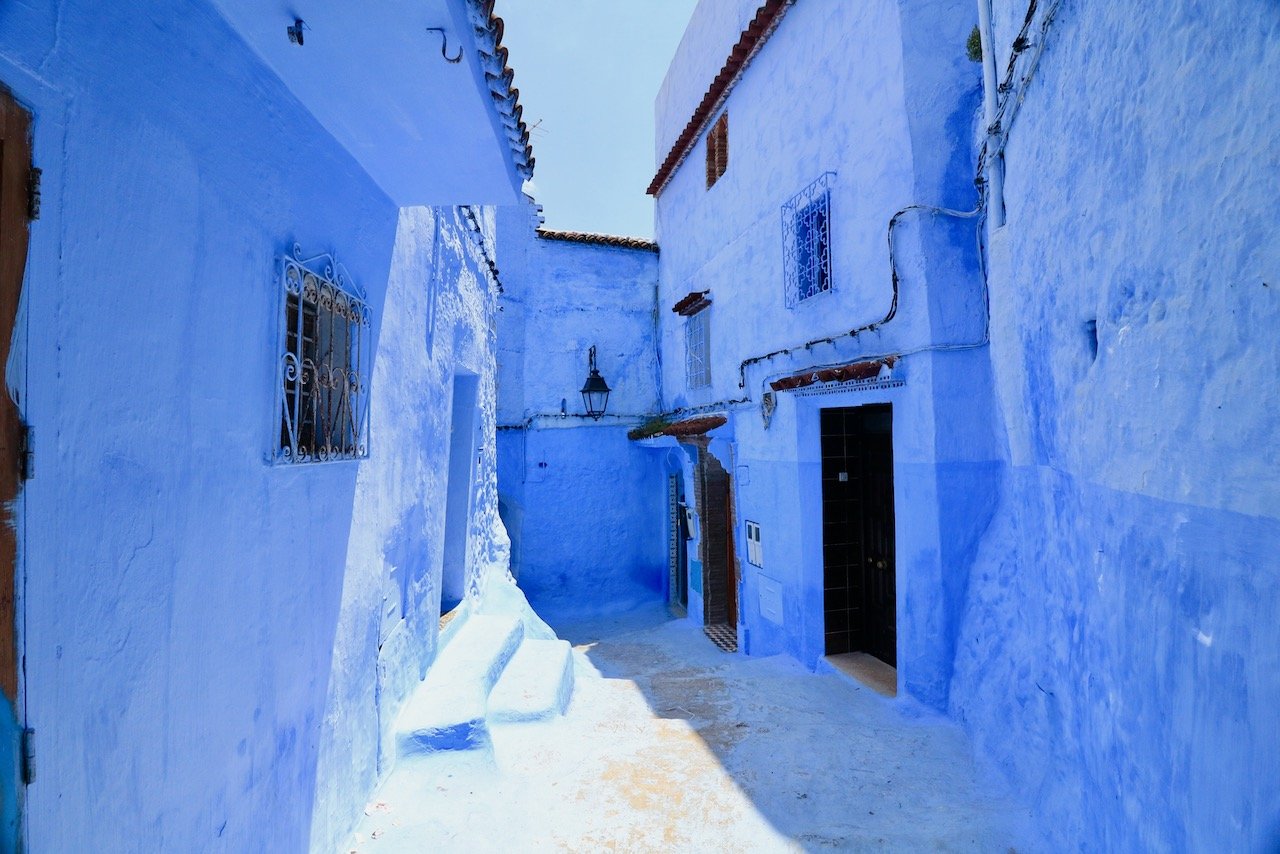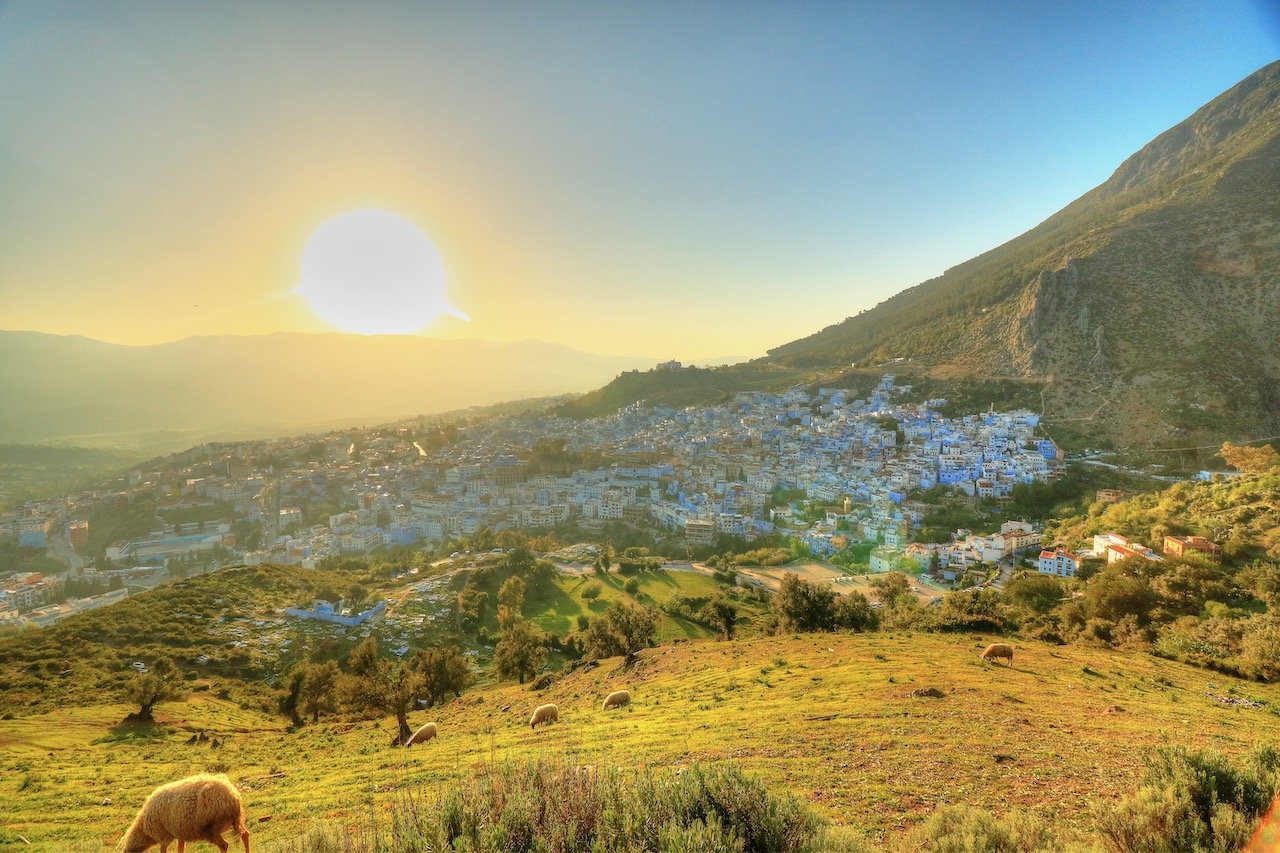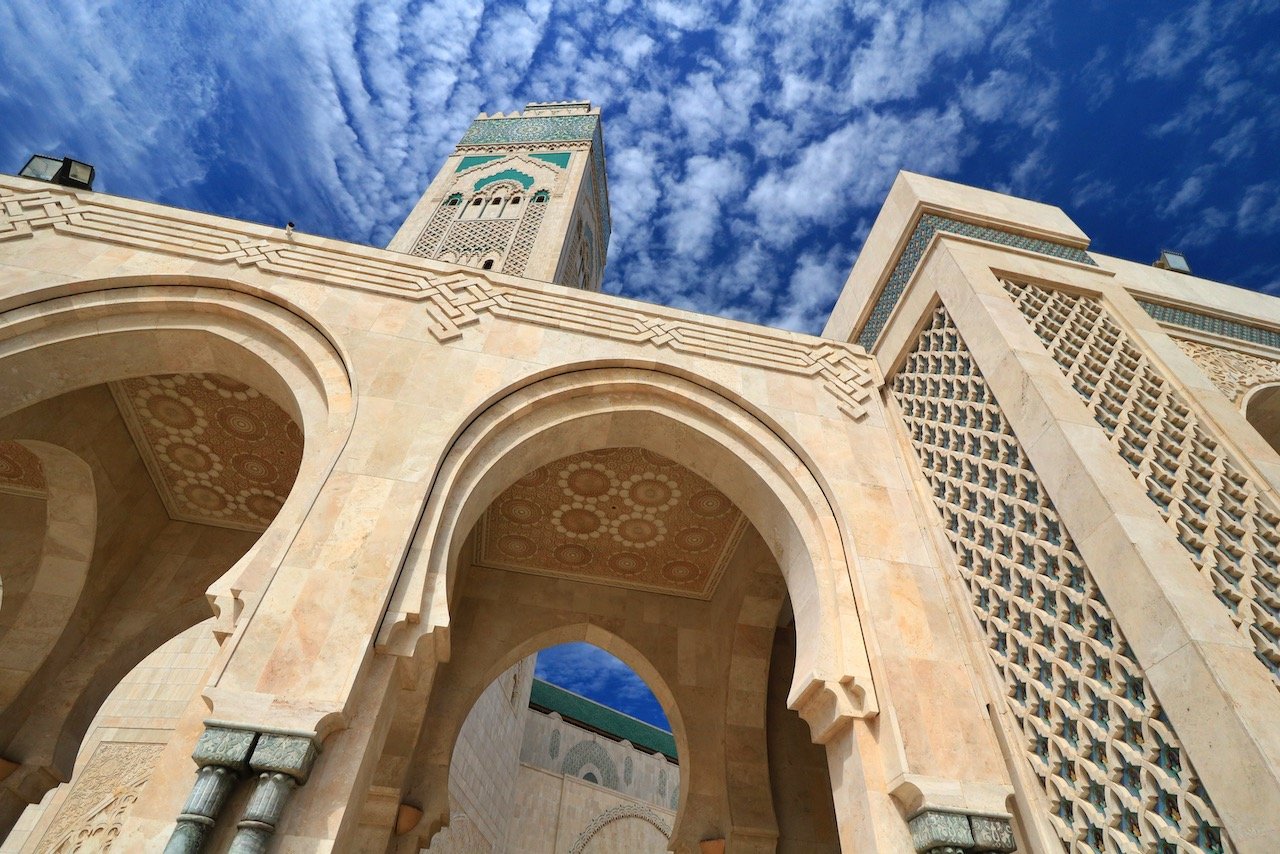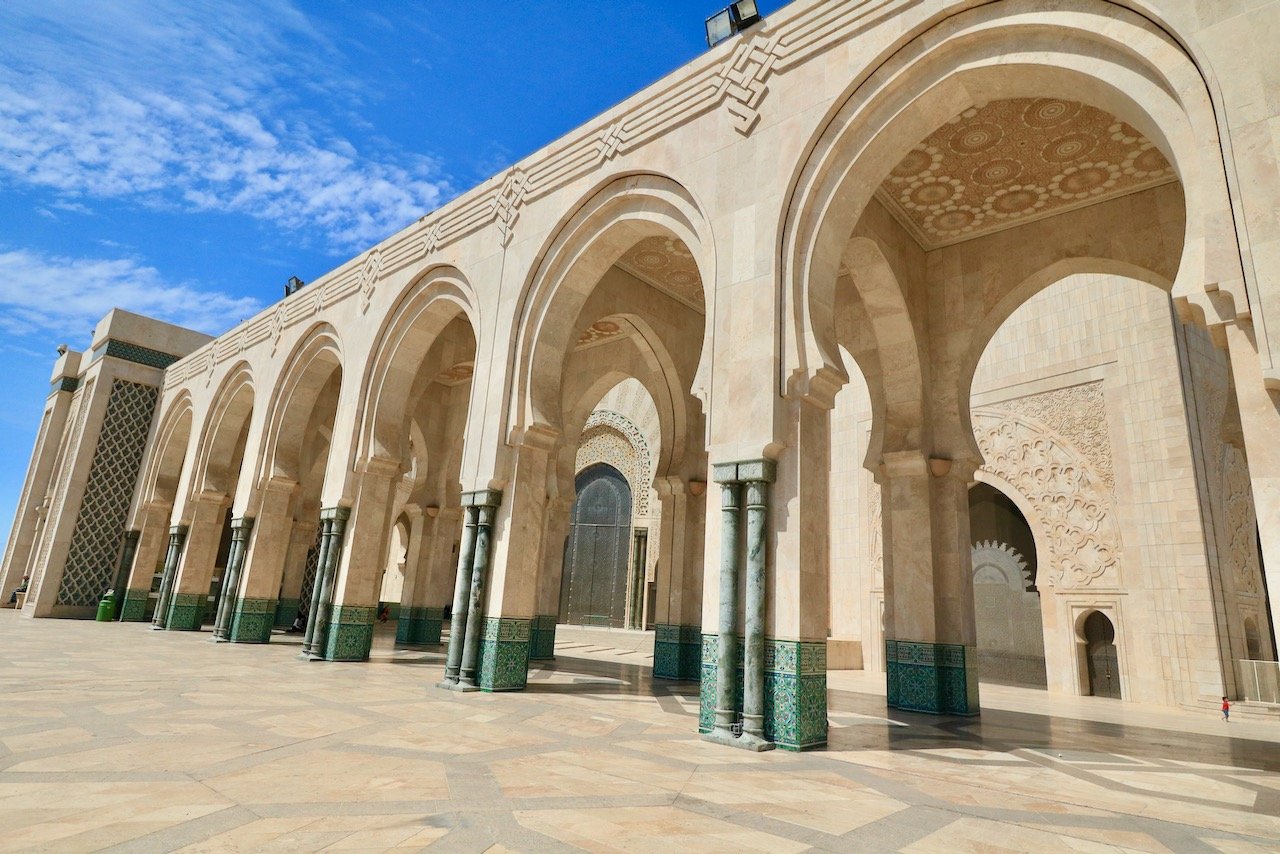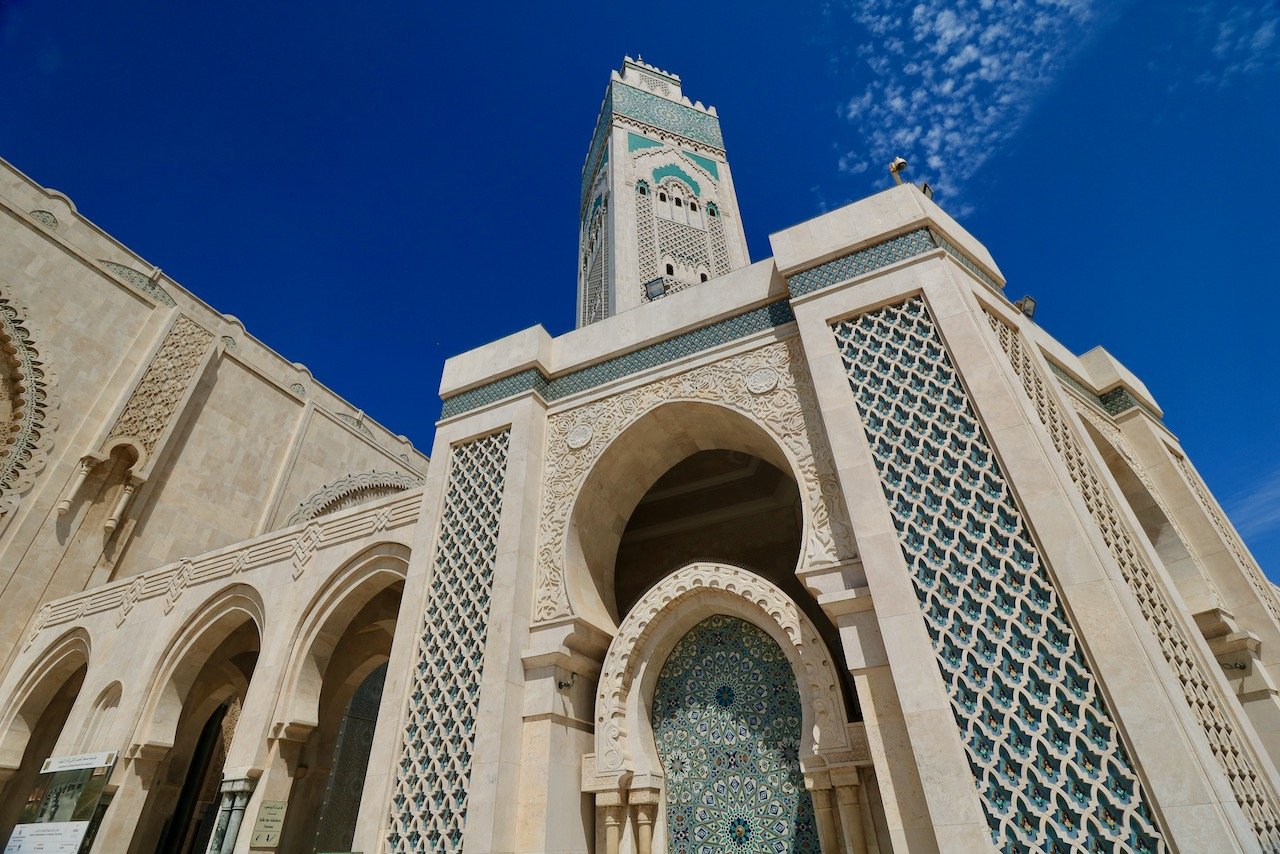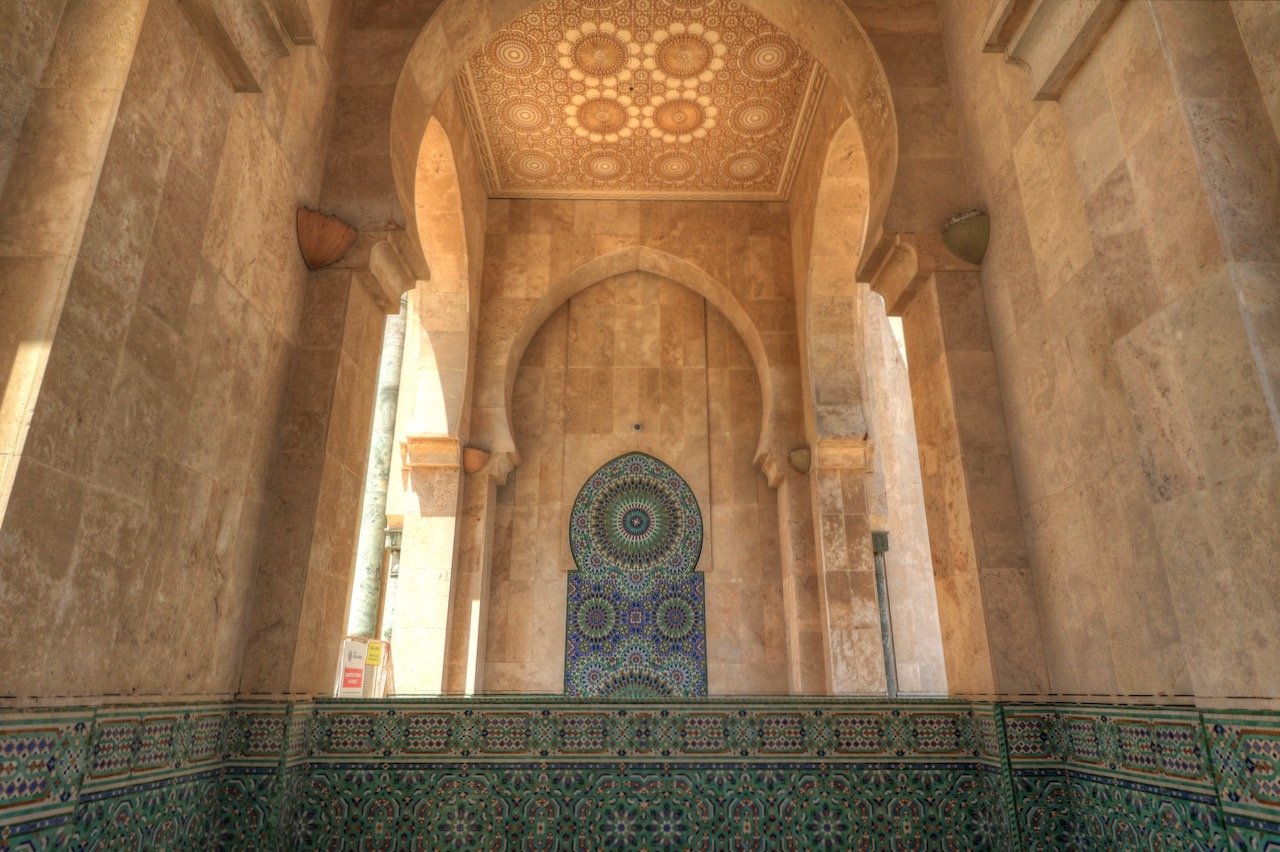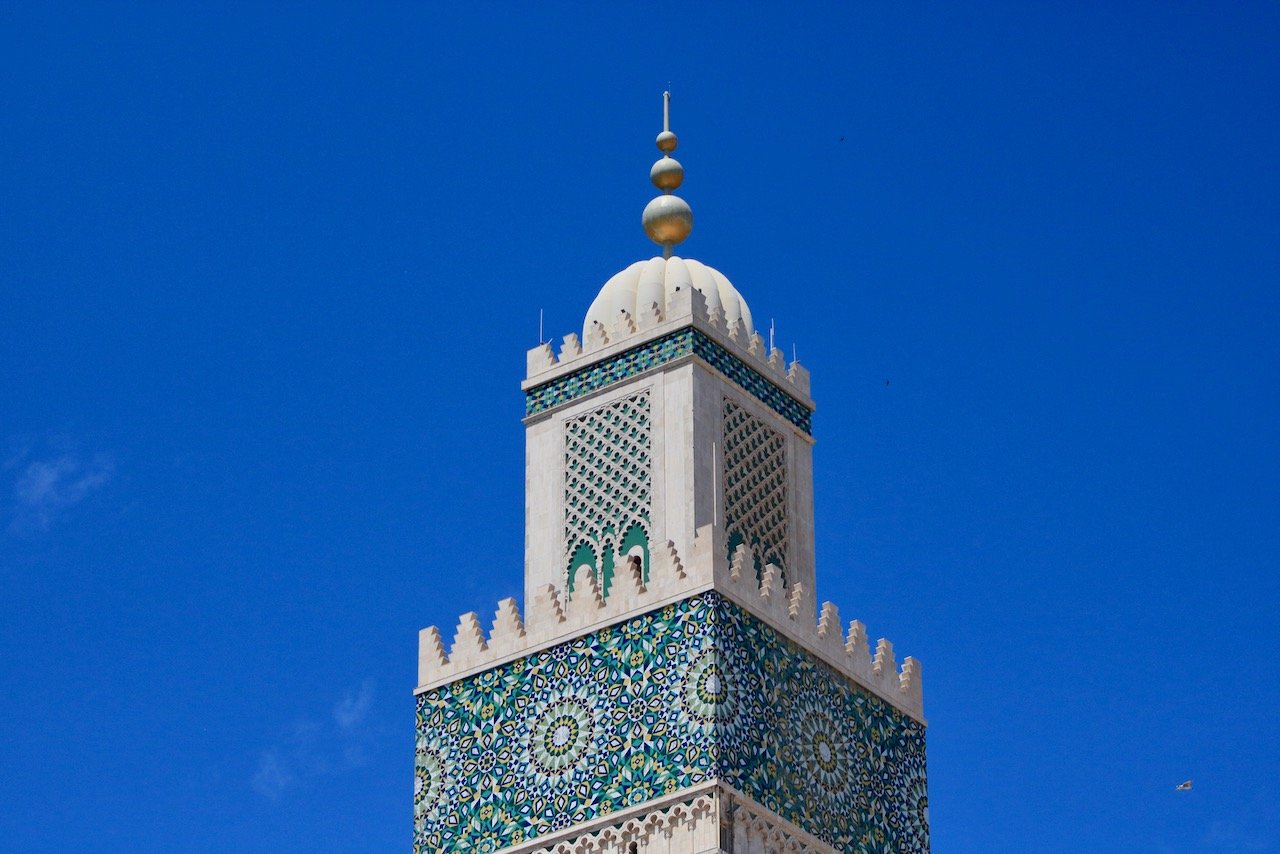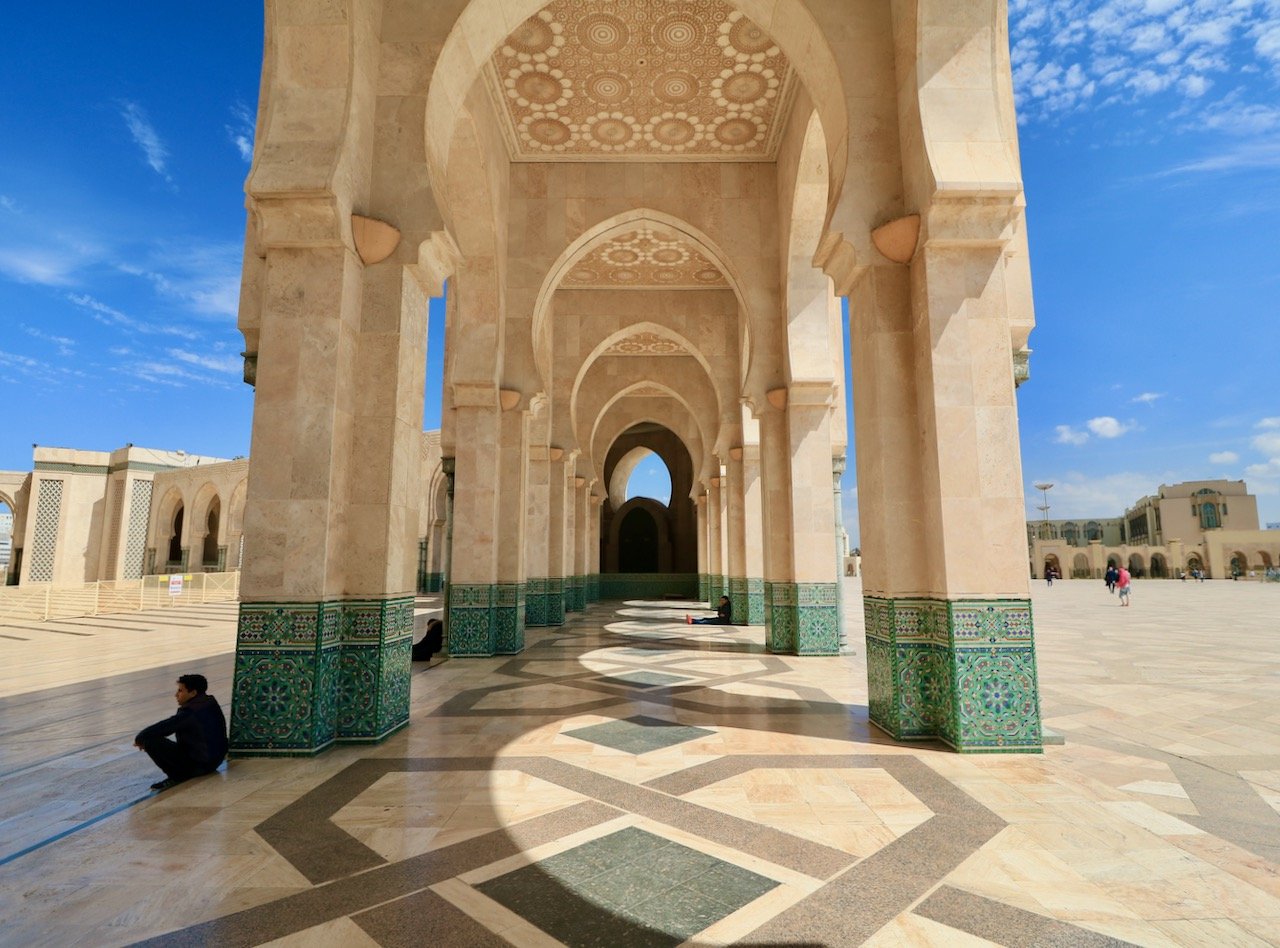Which city in Morocco is best for you?
(Some links in this post are affiliate links. If you click through and take action, I'll be compensated.) If you are also interested in any PRINTS from any of my posts, be sure to check out my store where you can buy prints as posters, in metal/wooden frames or on canvas.
In my experience, when most people think about visiting Africa, usually Morocco enters the conversation very quickly. Any why not, you have the Atlas Mountains, the Sahara Desert, beaches, surfing, great food, cheap prices, and moroccan treasures to bring back home. In Morocco itself, you’ve got plenty of choice between the seaside coastal towns of Essaouira, Agadir, or Casablanca or inland cities of Marrakech, Fez, Rabat, and Chefchaouen, just to name a few. Getting from city to city is quite easy with buses operated by Supratours or CTM and by train with ONCF or TGV. Lastly, knowing a little bit of french and/or arabic will go a long way in Morocco.
If you like some of my photos that you have come across, just know that I have many prints showcasing a variety of landscapes available for purchase below! (Sold as Posters, Canvas, or in Metal-Frames and Wooden-Frames).
Most experiences I hear about vary greatly, but overall, there is something for just about anyone in Morocco. Here’s a look at some of the cities to consider checking out:
Marrakech
There is old and new Marrakech, with the latter a more traditional city-like atmosphere (think more high rises and chain restaurants). Old Marrakech is where you go to get some culture. If you fly into Marrakech, a taxi to the (old) city center should run you anywhere from 70-100 Moroccan Dirhams. Insist on this price as the drivers will usually say 120 Dh for 1 person and 100 Dh per person for the ride.
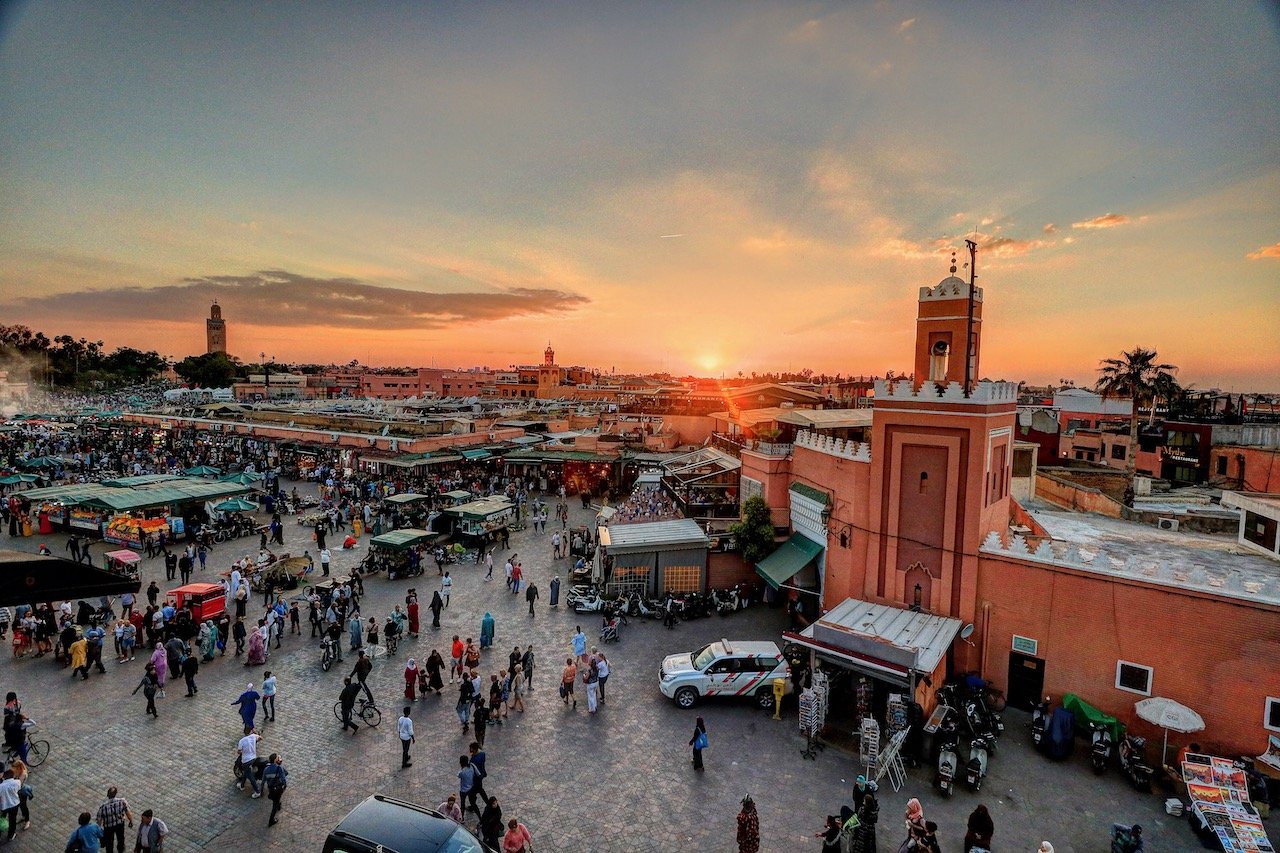
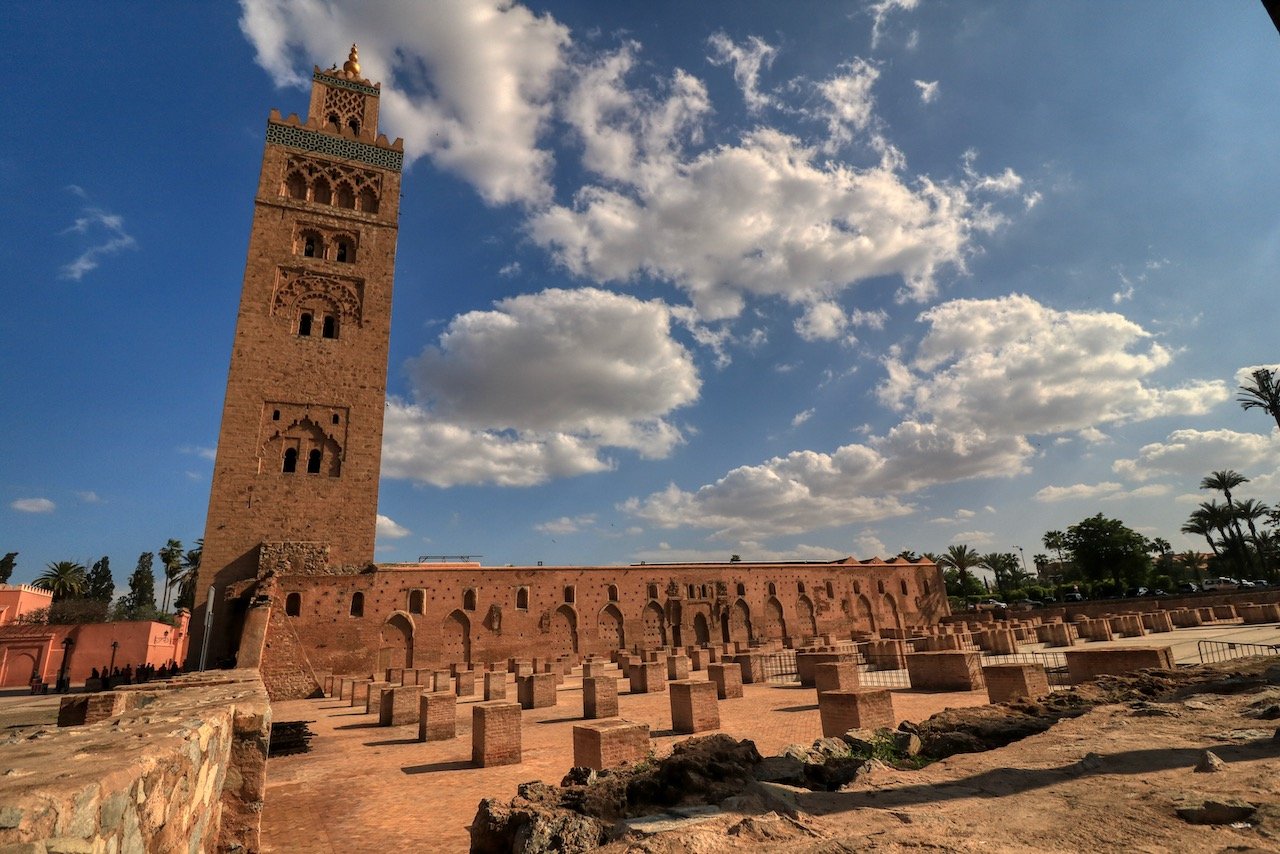
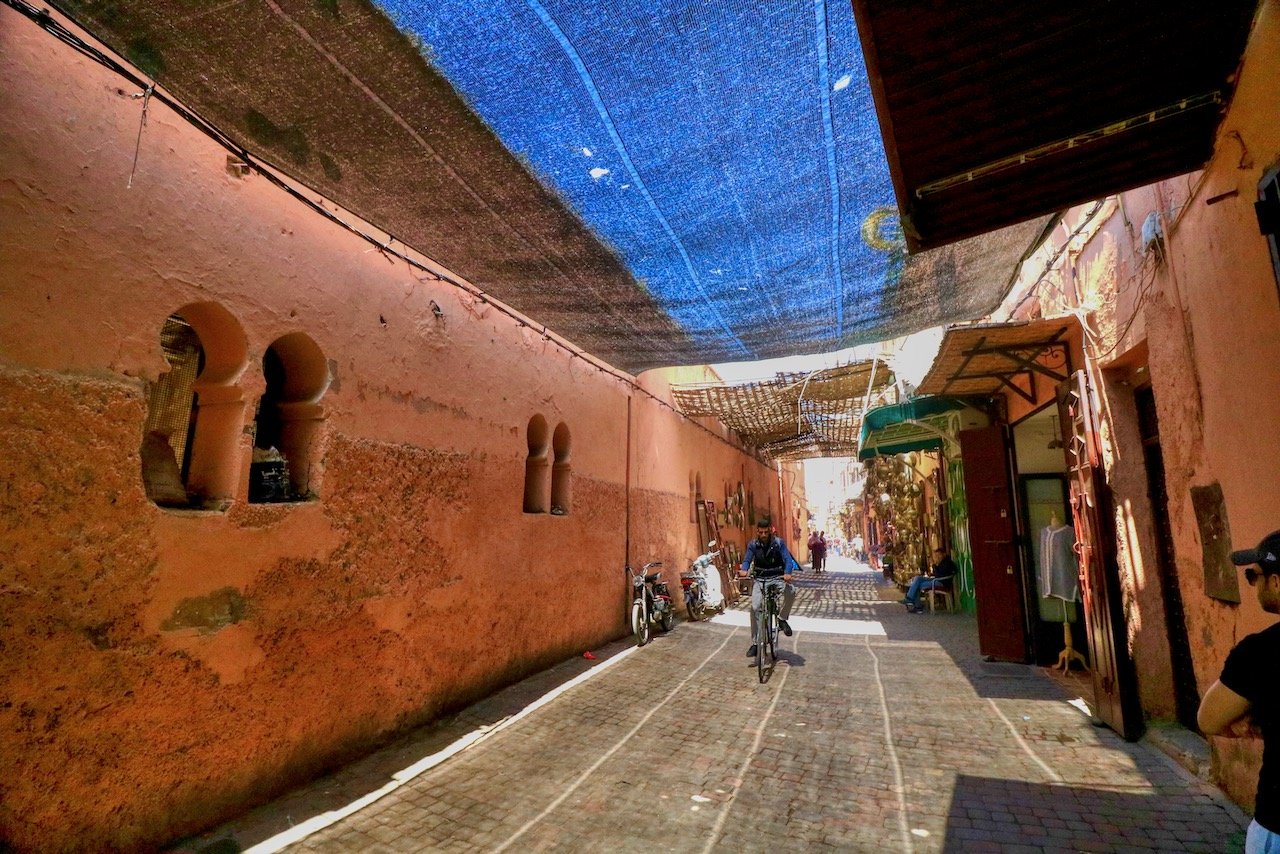

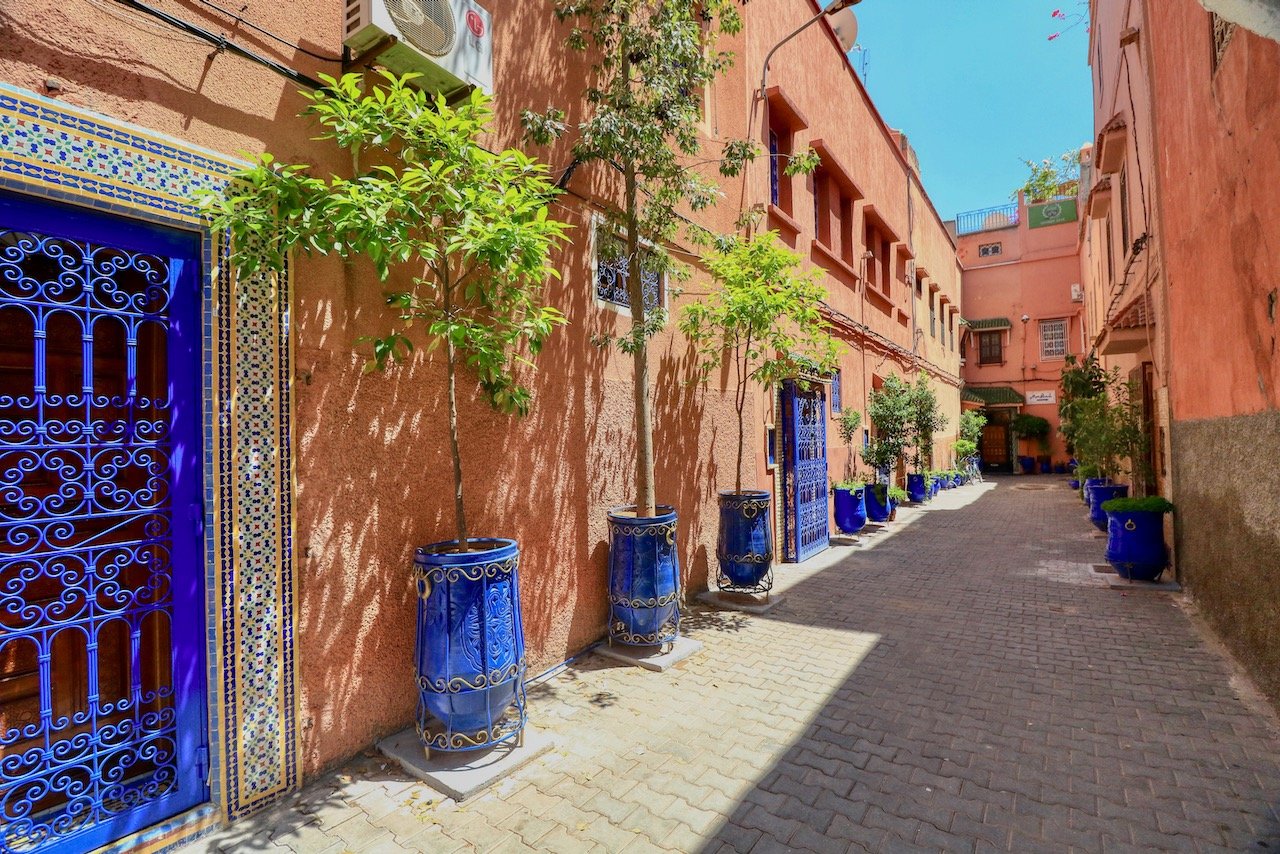
There is an electricity to this part of the city, especially in the main square of Marrakech called Jemaa el-Fna. Here you can get every type of moroccan cuisine like tagine, fresh seafood, teas, kebabs, but my personal favorite was tangia.
For your family and friends back home, you can bring them back anything from soaps, pottery, plates, textiles, pashminas, lanterns, etc. If you do plan on going to the smaller Moroccan cities like Essaouira on coast, I would say wait to purchase these items there, the prices will undoubtedbly be cheaper, oftentimes by less than half.
The best way to see the city, and most other places in Morocco is to just get lost around all the medinas. You will encounter great people along the way. Since Islam is the overwhelmingly practiced religion here, you will often hear the call to prayer at many of the city’s mosques such as at Koutoubia Mosque or Ben Youssef Mosque, both of which are worth visiting. The Bahia and El Badii Palaces are stunning grounds of traditional Moroccan architecture and lush gardens, built by sultans in their time. A one secret mausoleum with other notable Moroccan features and gardens can be seen at Saadien’s Tombs.
PROTIP: You will encounter tagine everywhere in morocco, but tangia, not as much. Tangia itself is a terra cotta cooking vessel and is used for making a moroccan confit-style stew. The meat is incredibly tender and the flavor is to die for. You will thank me later.
Essaouira
About 200 km to the east of Marrakech lies the quaint coastal town of Essaouira. If you found Marrakech to be a bit busy and overwhelming at times, you will feel much more at ease in the confines of this city. Within the city walls are alleyways full of restaurants and cafes to relax at, sometimes with musical entertainment. The city itself is rather small and can be seen in about 1 day’s time, but if you’ve come from a bustling city like Marrakech or Casablanca, two days here is very satisfying.
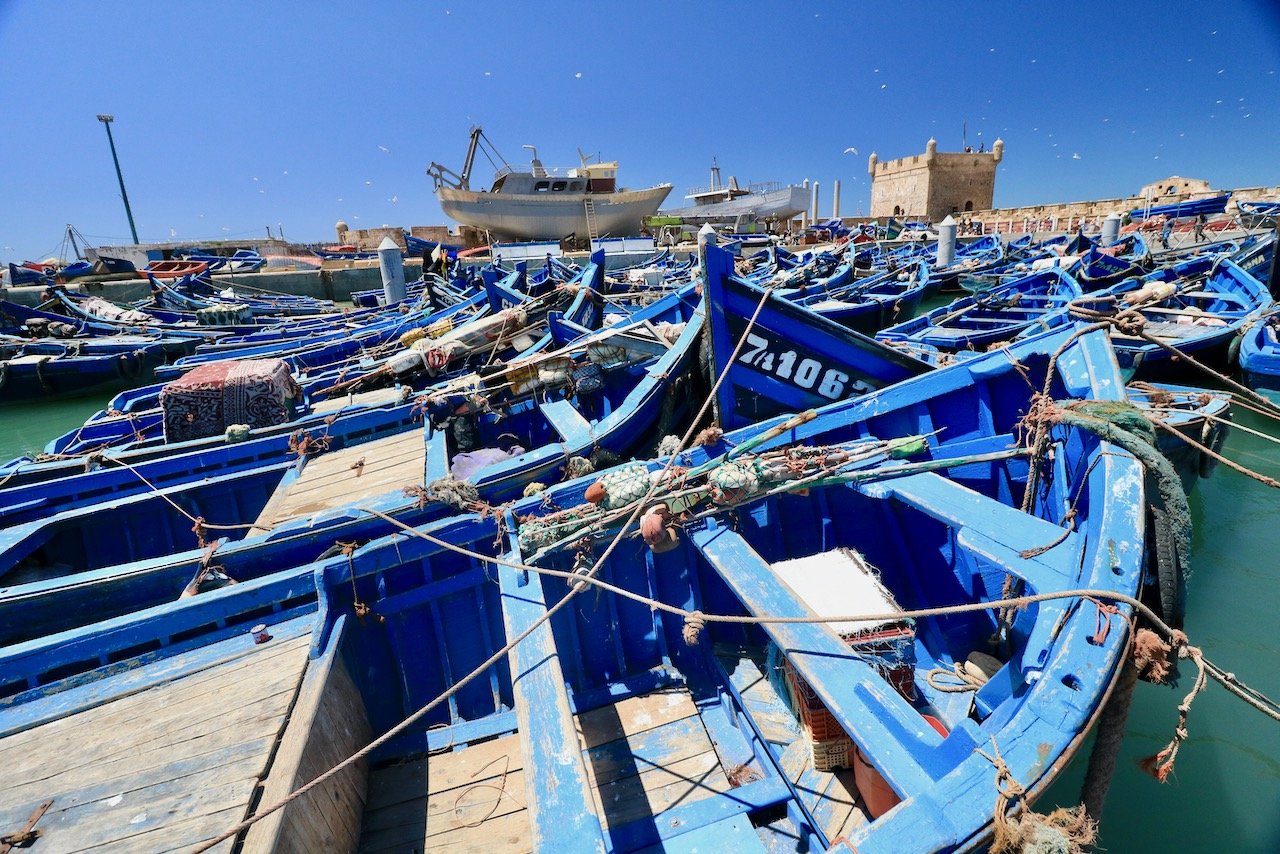
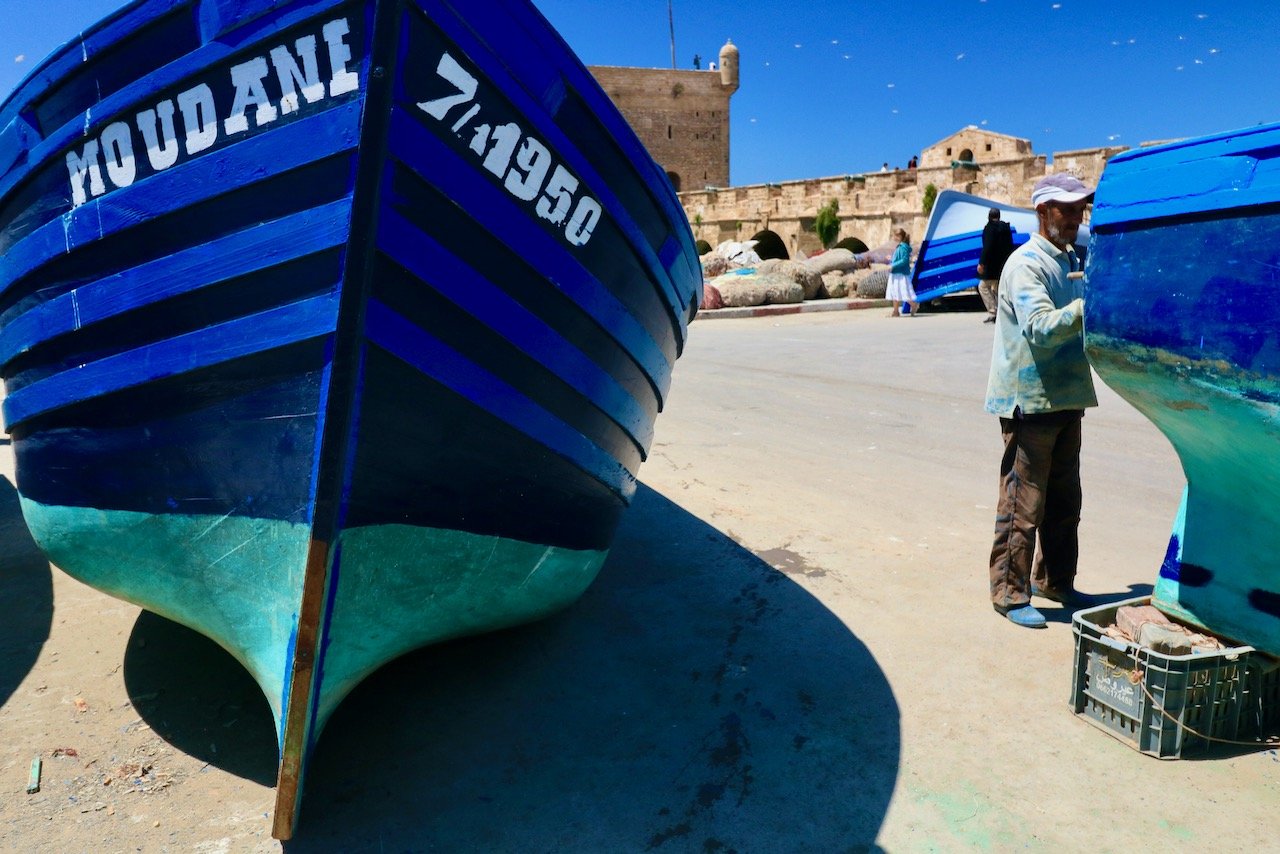
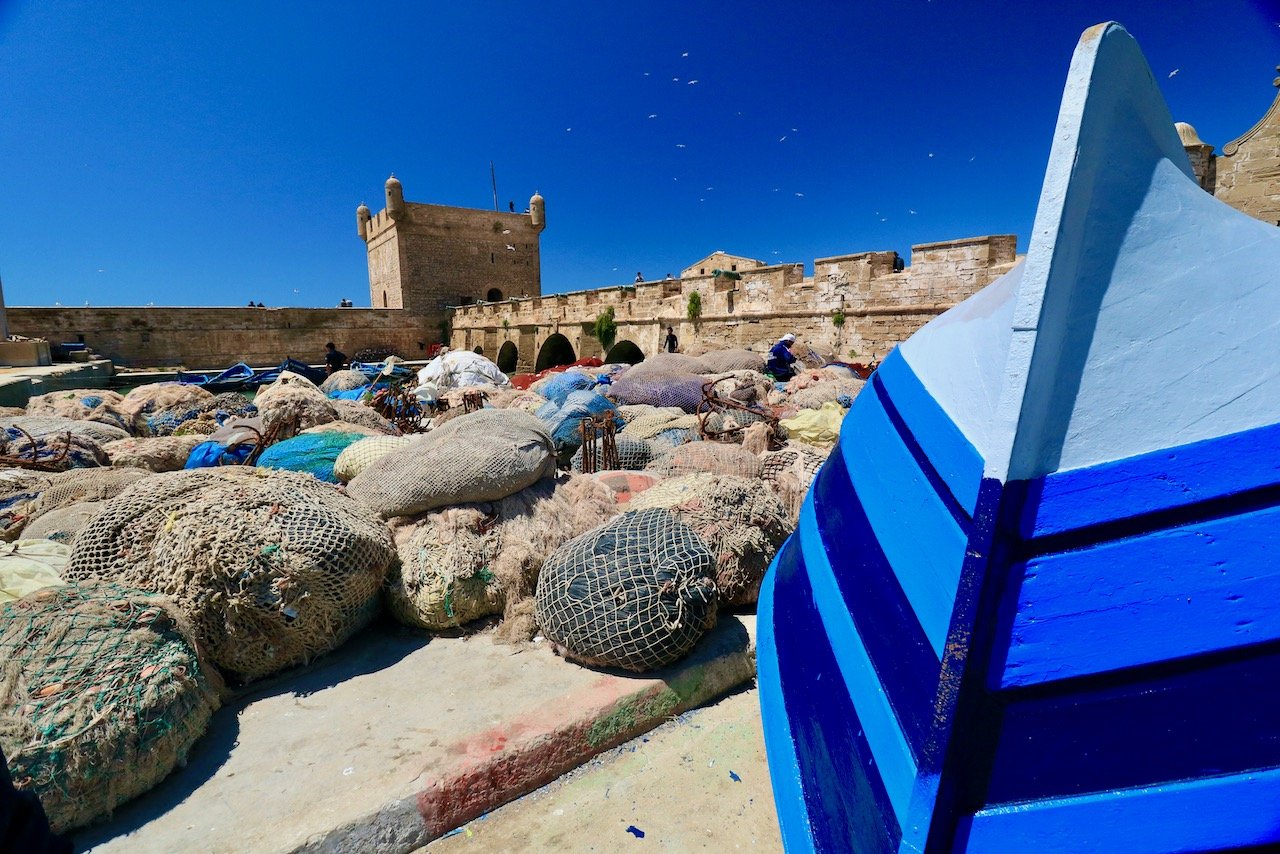
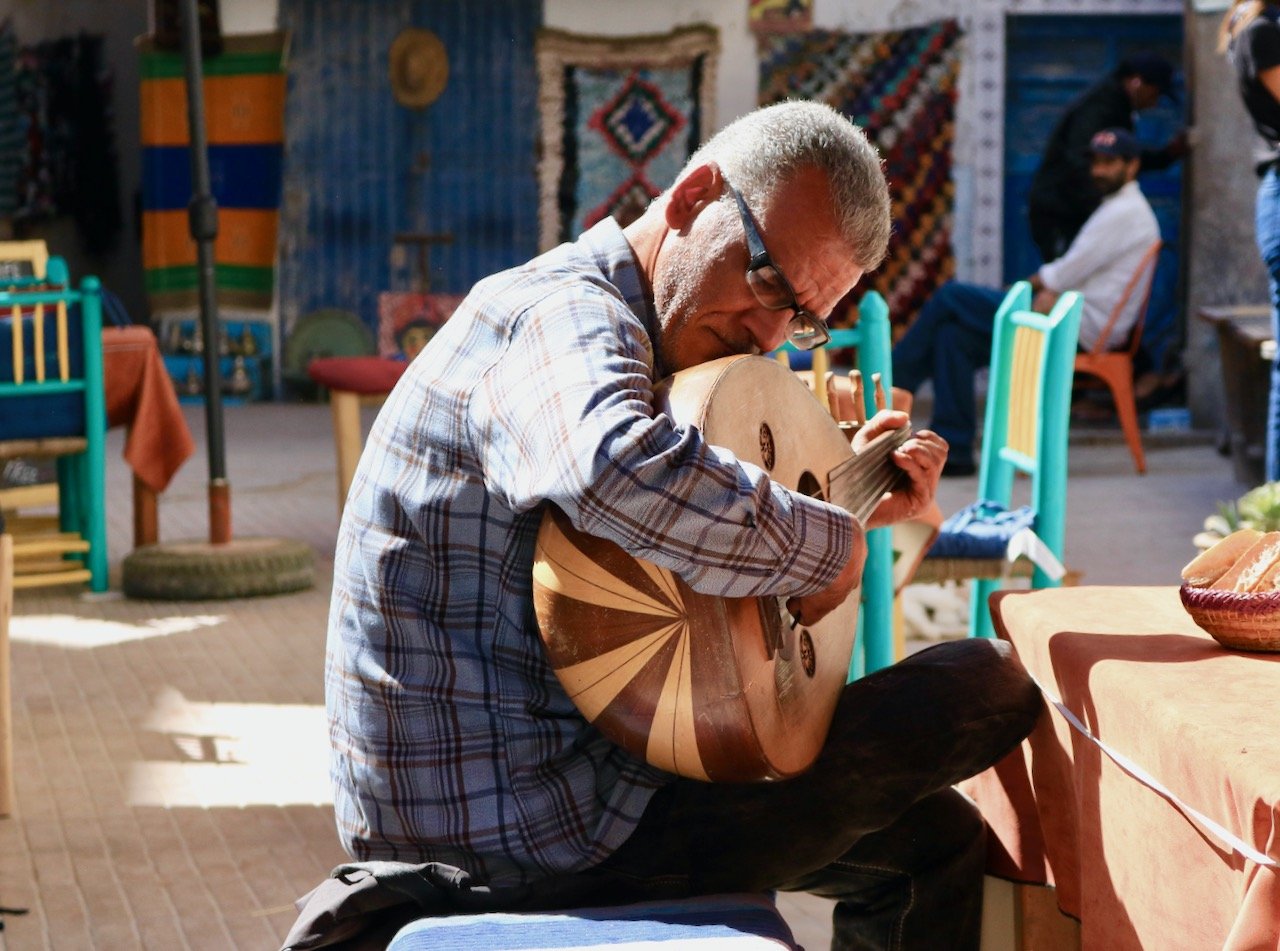
The city is known for it's citadel and harbor, home to hundreds of brilliantly blue fisherman boats. The present city was constructed by European architects and was originally called 'Souira', meaning 'the small fortress' but the name then eventually became 'Es-Souira', meaning 'the beautifully designed'. Furthermore, artisans here are known for their craft in cabinet making and wood carving. If you meander along the alleyways you will indeed find several shops with large workrooms, crafting such masterpieces. It's also known for being quite windy, so it is a haven for kite and windsurfing (if that's your thing).
If you come in the summer time, you will most likely be drawn to the beach area. From what I remember, it was relatively clean and not very busy, but still had all the modern conveniences of any beach boardwalk (think ice cream stalls and cafes).
After some time on the beach, you can make your way to the fishing port nearby. You will instantly be greeted by scores of blue boats in the harbor and may find a local adding a fresh coat of blue paint to theirs. Just above the harbor is the citadel that provides excellent views of the whole area. The view is perfect for any time of day but is best enjoyed around sunset.
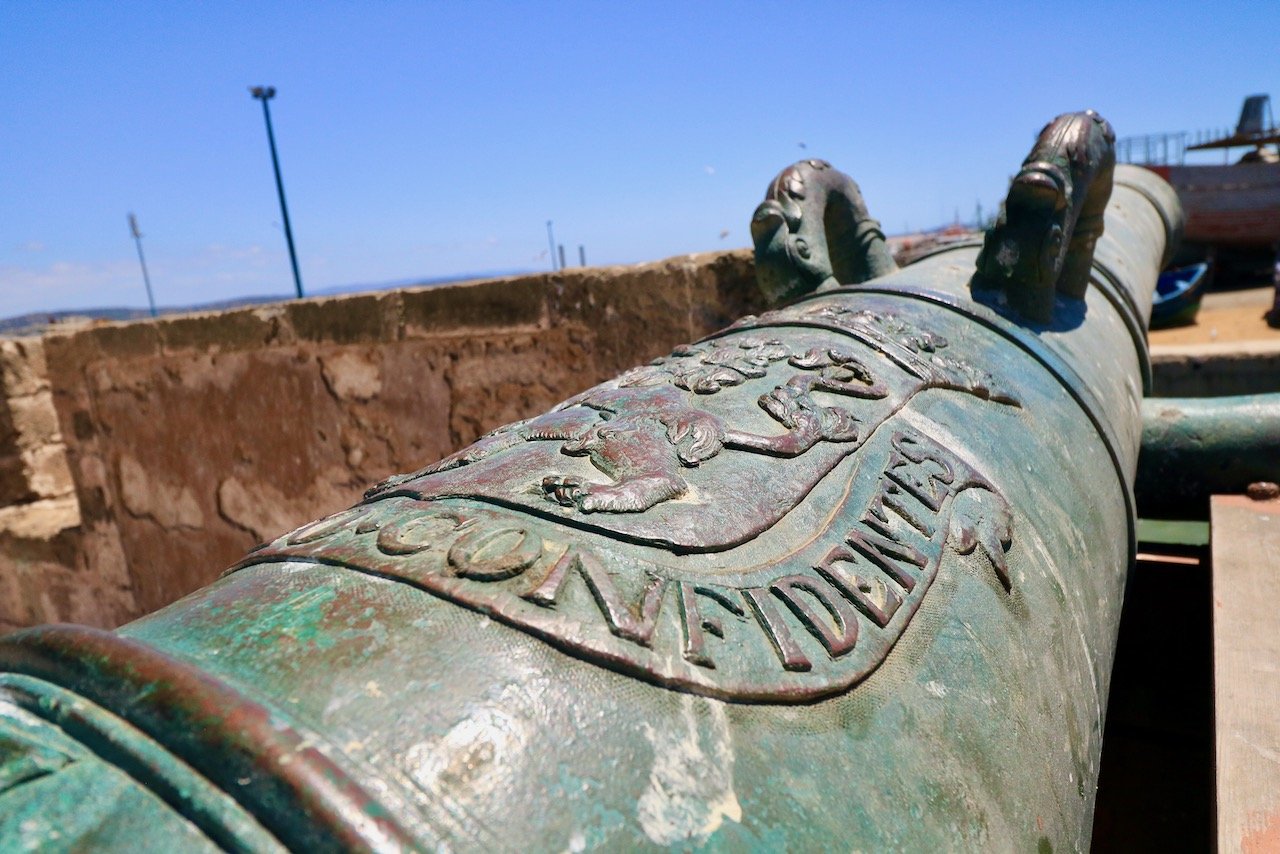

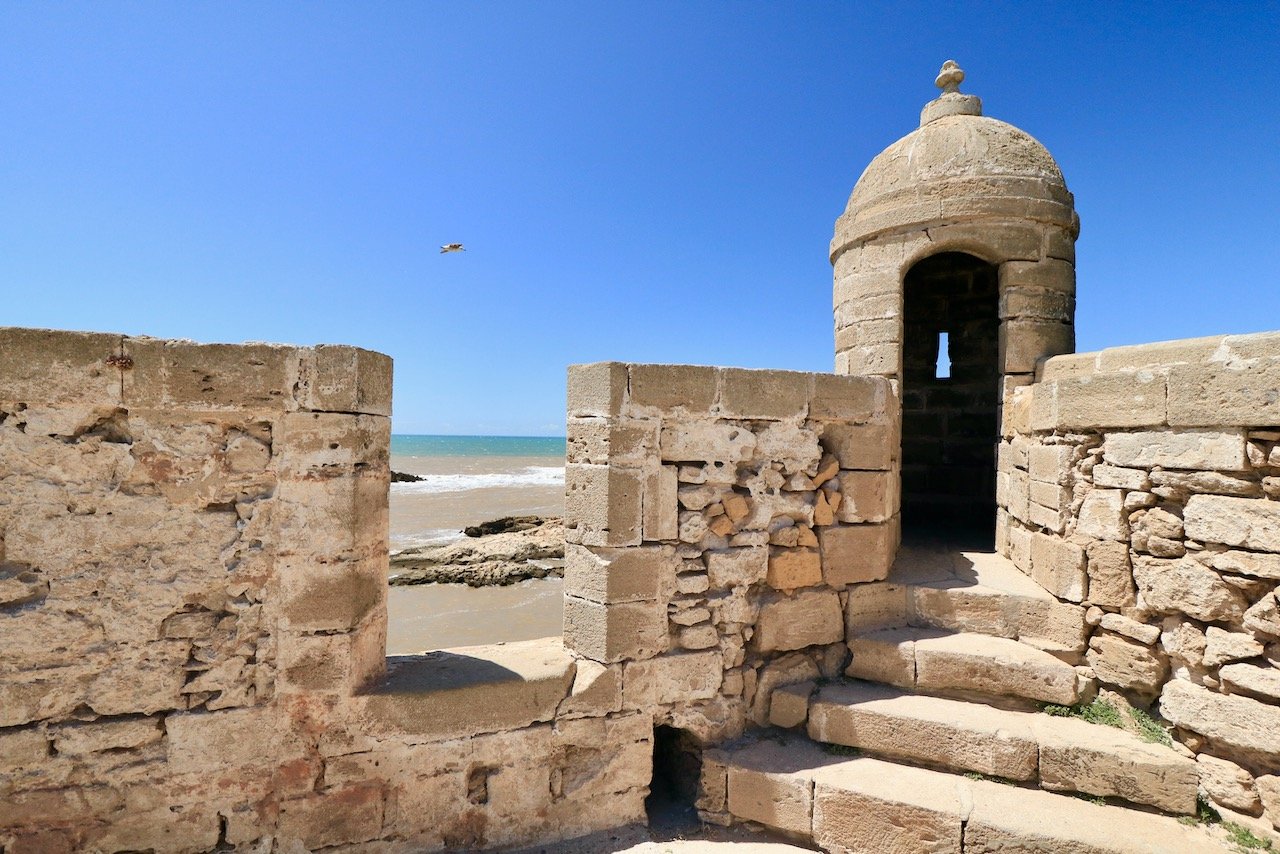
Making your way into the city walls, you will find it to be similar to Marrakech, with vendors and small shops and cafes. But you’ll notice that it’s a bit quieter, more tranquil, and less crowded than Marrakech. A good way in, relax at Tara Cafe and enjoy the surroundings.
Essaouira is rather modest in size compared to the rest of Moroccan cities, but the tranquility here cannot be rivaled.
Casablanca
Probably the most famous city in Morocco, thanks to the movie, it is the main port and has the largest airport in the country. Unlike most of the towns in Morocco, this is a proper city that is built up and has many high rises. Nonetheless, you will still find hidden gems in alleyways in the old medina.
Perhaps the most noticable landmark is the Hassan II Mosque on the coastline. The sheer size and scale of this building is impressive and its marble exterior provides an especially gorgeous facade during a cloudless day. Tours of the interior are available and worth seeing as well. As always, with islamic tradition, suitable attire is strongly encouraged, if not compulsory.
Although Morocco is indeed a muslim country, it is not a dry country, however consuming alcohol isn’t so much a public sight. Nonetheless, since Casablanca is very popular with foreigners, you can find many restaurants and bars in the La Corniche area of the city. Also, like alcohol, smoking shisha (water pipe/hookah) is not a very public thing to do either, however, you can find these types of places also in this area.
Just because Casablanca is a built up city, doesn’t mean you can’t find a beach nearby. Also in the Corniche, you can find beaches at Ain Diab and Lalla Meryem.
For the best view of the Hassan II Mosque at night, and an incredibly classy dining and drinking experience, look no further than Le Petit Rocher. The quality of the wine on offer here and the jazzy band that played provided an amazing atmosphere to share with new friends we had made on this trip. Think of low lighting by candlelight, artistic (but not pretentious) decor, and a classy band with the stunning voice of a female vocal lead, and that would aptly sum up the time here.
Fes (Fez)
Fes is known as Morocco’s cultural capital with a plethora of souks and walled in medinas.
What you’ll come to notice after walking around the city is the myriad of ornately decorated gates, referred to as ‘bab’. These are littered across the city and no two gates are alike. You will stumble across many of them as you make your way through the Fes. Here is a handy guide from Wikipedia of all places that outline most, if not all, of these Gates.
Fes is also known for its leather tanneries, its most famous being the Chouara Tannery. You can see all the stone filled vessels with different dyes to treat all the leather. This production utilizes no machinery and is still true to the old medieval ways of manufacturing the leather as well.
Be aware that to get to most viewing points of the tannery, you will have to make your way through a leather shop as well. Owners will usually find tourists and say they will bring you to these viewpoints but won’t ask for a donation right away, though they will absolutely insist upon one after taking you there. Some may even go so far as to say they will show you for free, but still beckon for a payment. I can’t tell you how much is ‘enough’ but maybe sort out a small fee with them before following them to alleviate any issues that may come further.
As far as places to stay, you can’t go wrong with most Riads in Fes. Our stay at Riad Verus was extremely pleasant. The main room is well decorated and feels authentic when it comes to a proper Moroccan riad.
For some attractions to see that aren’t just medinas and gates, take some time to explore the El Glaoui Palace and the Marinid Tombs. The Tombs are thought to be from the 14th century and provide a great viewpoint of the entire city (especially during sunset). There has not been any restoration efforts on the site The name comes from the people that conquered Fes in 1250 A.D. (the ‘Marinids’). The El Glaoui Palace possesses carved intricate tiles, art, and mosaic designs that give it so much potential as a tourist and cultural site. Unfortunately the site itself has not been refurbished and so the potential for such a place that is kept intact has yet to be realized.
